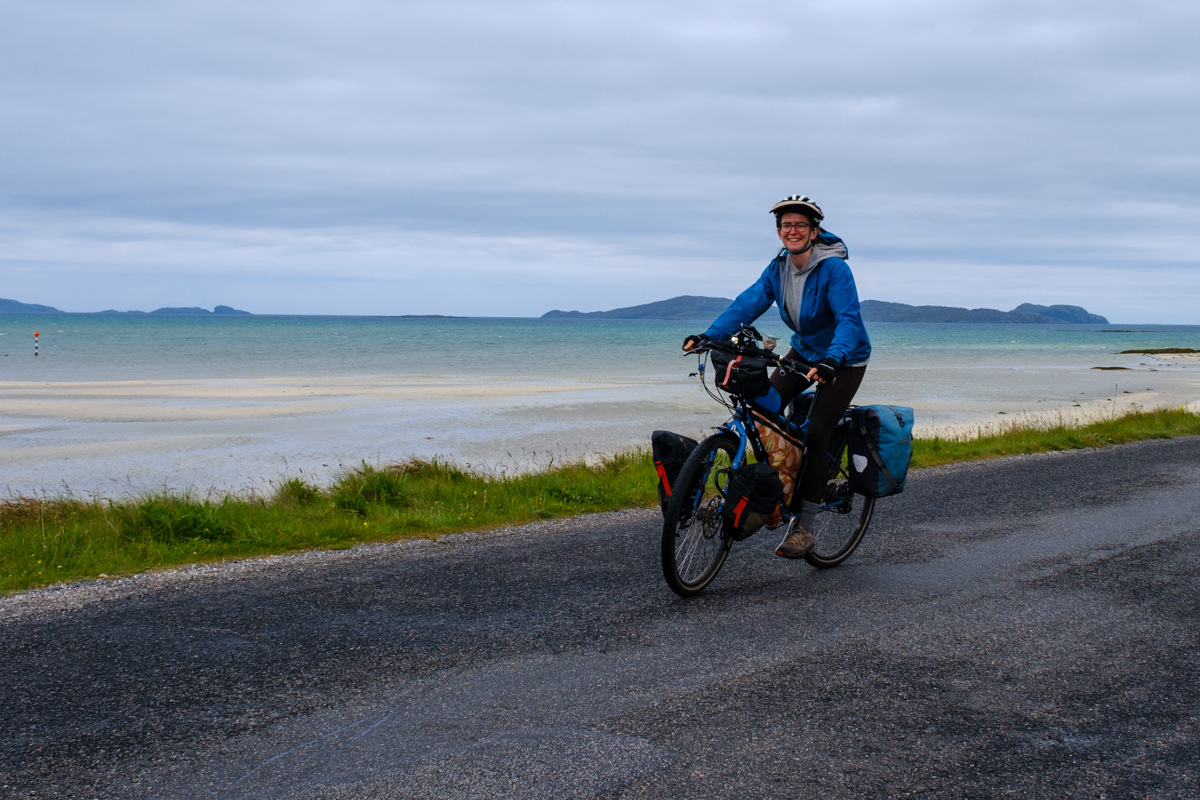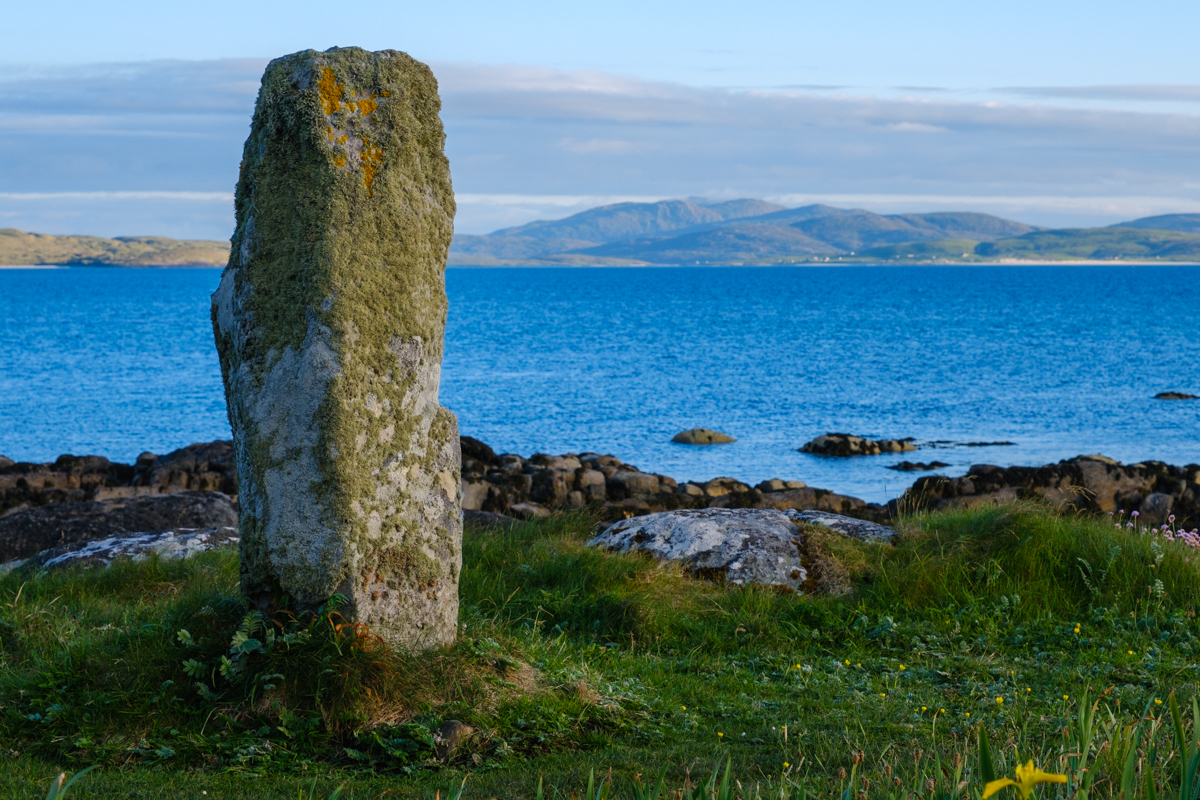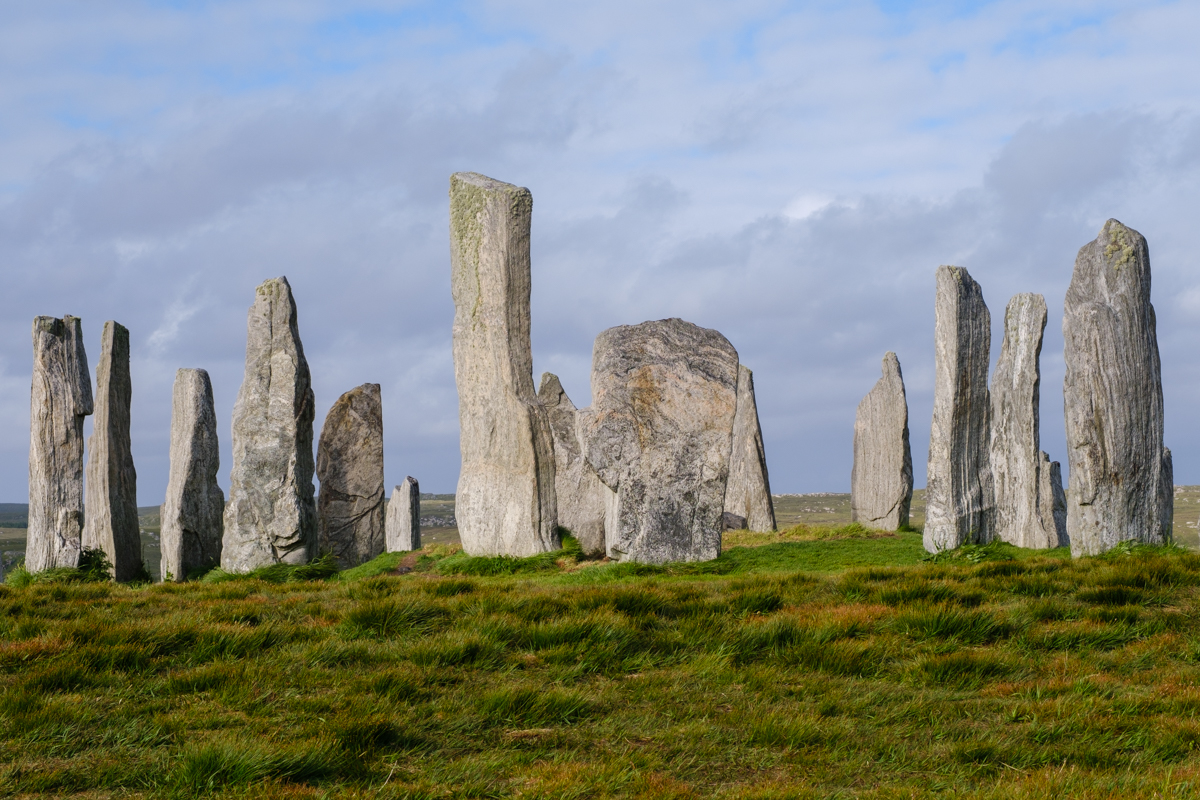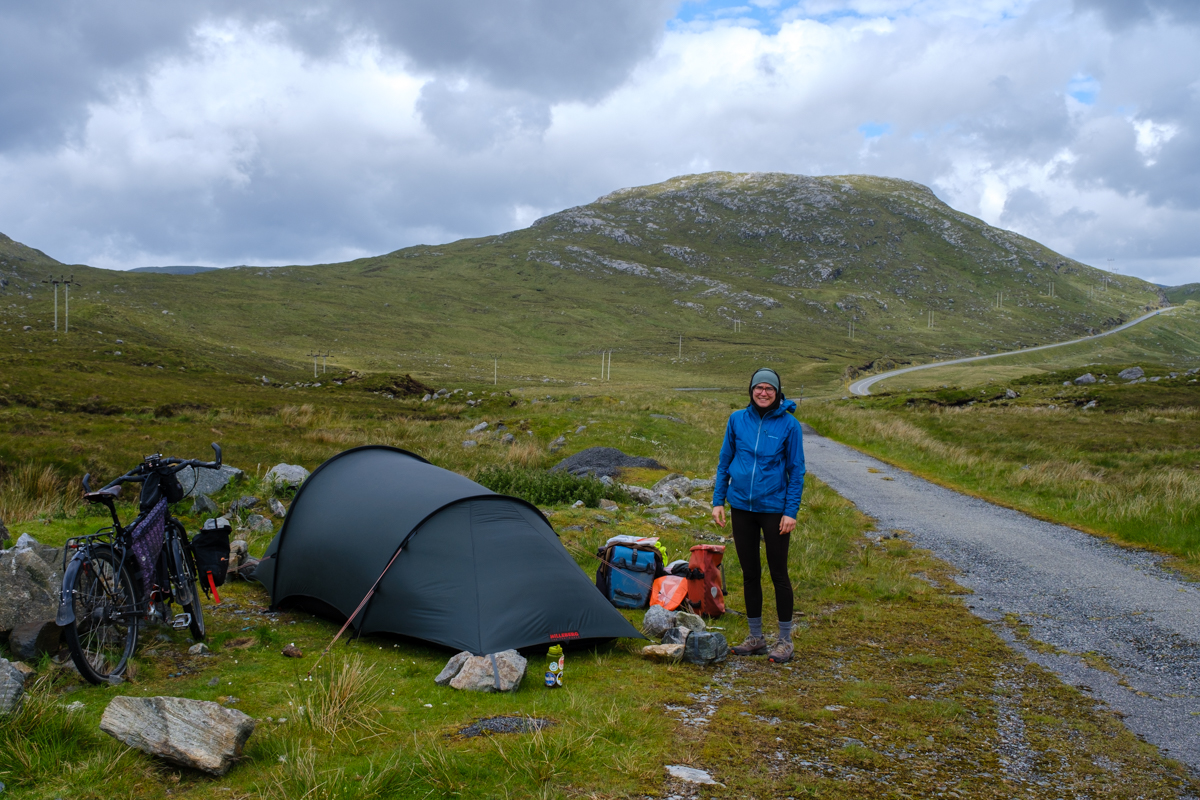Cycling the Outer Hebrides
The Hebridean Way is a popular scenic route among cyclists, backpackers, and motor tourists. The 186 mile route visits 10 different islands connected by 2 ferries and 6 causeways. On the ferry from mainland Scotland to the first island, there were at least 20 other cycle tourists aboard with us, and it was awesome to see so many people visiting by bike. We had a great time cycling the Outer Hebrides in early June of 2022, though we dealt with some very difficult weather during the second half of our trip.
Route

Download the GPX track for the Hebridean Way.
Vatersay and Barra
We rode the Hebridean Way south to north, since that is the predominant wind direction. The ferry from Oban on mainland Scotland to Castlebay took about 5 hours on CalMac Ferries, an efficient and affordable ferry service. We saw several pods of dolphins playing around the ferry, and some people on the boat saw an orca (we were on a different part of the boat unfortunately). Our ferry arrived in Barra in the evening, and we headed south to the official start of the route on Vatersay island. We found a beautiful campsite in the dunes of a white sand beach and watched the sunset, which happened around 10:30pm, before going to bed.

The next morning was pretty rainy, so we slept in before riding back to Barra and around the island. We stopped at the Barra airport, which is the only airport in the world to use a tidal beach as its runway. The beach was, indeed, very large and flat, but it was still pretty wild that someone decided it would be a good place for an airport.



Eriskay to North Uist
The first inter-island ferry was between Barra and Eriskay, and we saw a big group of seals hanging out on some rocks near the middle of the crossing. Eriskay is a small island, and we crossed the causeway onto South Uist in no time. After following more gorgeous coastline and long beaches, we found another great campsite right on the water.





The third day was the start of our trials and tribulations with inclement weather, though initially it was somewhat in our favor. We had 20-30 mph winds, but luckily they were mostly behind us on the Uists. We visited the Balranald Nature Reserve near the end of the day, which had yet another amazing white sand beach with lots of bird life.


Harris
We took the second ferry from North Uist to Harris on an extremely windy day with gusts of up to 50mph in the forecast. The ferry was still running, which was a little surprising, because the sea was choppy and the boat had to take a very specific course to avoid shallow rocks and sandbars. It was a wild ride, and we were glad it wasn’t too long of a crossing, because we were both on the verge of getting seasick.
Our first campsite on Harris was kind of a disaster for several reasons. We rode up into the hills and found a spot that initially seemed nice and sheltered from the strong winds. After setting the tent up, the wind immediately changed direction and started battering our beleaguered tent. We didn’t feel like breaking down and moving somewhere else because it was starting to rain, so we decided to put the Hilleberg to the test and leave it in the wind.

Secondly, the “dry spot” where we pitched our tent turned into three inches of standing water after continuous rain through the night. We didn’t realize this was happening until the next morning, when all of our stuff was soaked. The wind was unrelenting and we were pretty bummed out, so when we found a nice indoor bus station in Tarbert, we sat inside for about 5 hours. There was even a coin-operated shower – 15 minutes of hot water for one pound! We also met some other cyclists who were taking a break from the wind, and they informed us that we were getting the remnants of Tropical Storm Alex, which originated off the Yucatán Peninsula.
After leaving Tarbert, the route climbed up into some remote and mostly uninhabited mountains. This was one of our favorite sections of the route despite the mist and wind!


Isle of Lewis
By this point we were struggling to keep our sanity through the continuing ferocious wind. We visited the Callanish Stone Circle and the Gearranan Blackhouse Village, but weren’t in much of a mood to stop anywhere for very long. We decided not to go all the way to the Butt of Lewis, because it would’ve added about 30 miles, half of which would’ve been straight into a headwind. Instead, we went directly to Stornoway and took the ferry to Ullapool on mainland Scotland.




Camping on the Outer Hebrides
Wild camping is legal in Scotland, and the Outer Hebrides are one of the most camping-friendly areas we’ve toured in. There are designated overnight parking areas for camper vans, which we haven’t seen anywhere else. Even though wild camping is allowed, we still try to be discreet and out of sight of any houses when possible. There are also some areas which do not allow camping, so we always look around for signs before setting up our tent. Scotland has plentiful public restrooms in towns or at ferry terminals, which is a great amenity when you’re living on the road.


